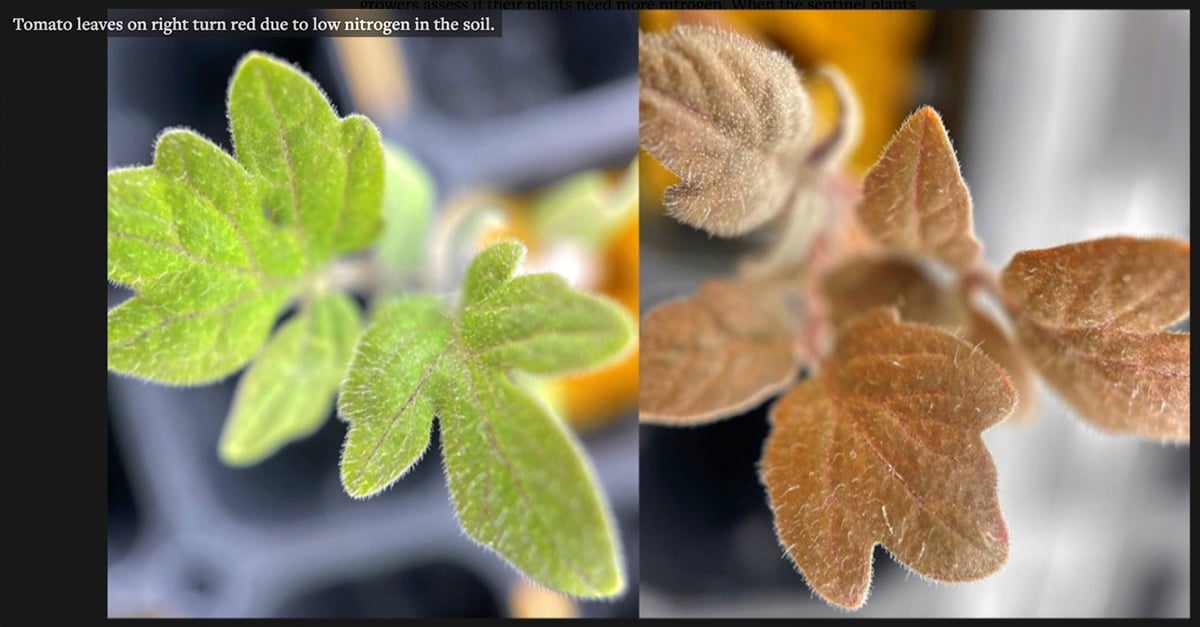After convincing growers to pay higher levies to fund research, Saskatchewan Pulse Growers is devoting a smaller proportion of check-off dollars on research in the current fiscal year.
Since 1984, the grower group has spent 67 percent of farmers’ money on research and development.
In 2002-03, it plans to devote 53 percent of the available checkoff.
While the $1.66 million will be a record in terms of sheer dollar amount, it represents a 14 percentage point decline in historical research commitment.
That weakening of support has some farmers feeling they’ve been sold a bill of goods, while others are not bothered.
Read Also

American researchers design a tomato plant that talks
Two students at Cornell University have devised a faster way to detect if garden plants and agricultural crops have a sufficient supply of nitrogen.
Directors and executives of Saskatchewan Pulse Growers spent a good part of last year telling farmers the levy hike was necessary because there was a $20 million annual shortfall in pulse research funding. That message was repeated in the group’s Pulsepoint magazine and at numerous grower group meetings.
It worked.
Seventy percent of producers who attended 11 regional winter meetings and nine town hall meetings voted in favour of increasing the levy to meet the growing research needs.
Accordingly, on Aug. 1, 2002, the checkoff rose from 0.5 percent to 0.75 percent. It will cap out at one percent on Aug. 1, 2003.
Later, a resolution to change the checkoff to a voluntary levy was defeated at the association’s annual general meeting.
But some levy payers like Vaughn Crone of Moose Jaw, Sask., feel betrayed that the proportion of check-off money going to research is below the historical
average.
He said it shows there are no controls on the way the board spends its money.
“They could take that money and send it to the Pope and we wouldn’t have a say,” said Crone, an opponent of increasing the levy.
Other farmers say they are not upset with how the board is allocating its funds. They are satisfied with executive director Garth Patterson’s explanation that the market development and communication budgets require more money these days.
Farmer Lorne Willner of Davidson, Sask., said administration costs are probably rising as well.
“Unfortunately that’s just part of life I guess, that bureaucracy or administration continues to eat up a larger chunk of everything nowadays. Salaries go up, office expenses go up.”
Gerald Leduc, a seed grower from Assiniboia, Sask., thinks it may take time to increase research spending, this being the first year of higher checkoffs.
“It probably takes a little while to ramp up the research, to get the researchers in place.”
Patterson said the board directed more money to research in the early days of the association because there weren’t as many competing spending priorities.
“There have certainly been issues in the areas of market development and communications where we’ve needed to invest funds.”
He said spending plans fluctuate from year-to-year. But the $1.66 million for research is still more than has ever been spent and represents more than half of the 2002-03 budget.
The plan is to increase research spending to $4 million by 2005.
“That’s probably going to take us up pretty close into that 60 percent range again,” said Patterson.















